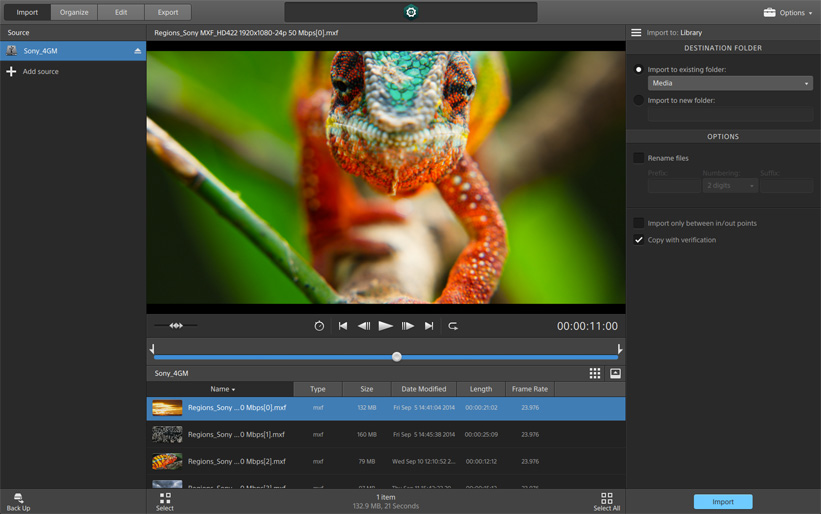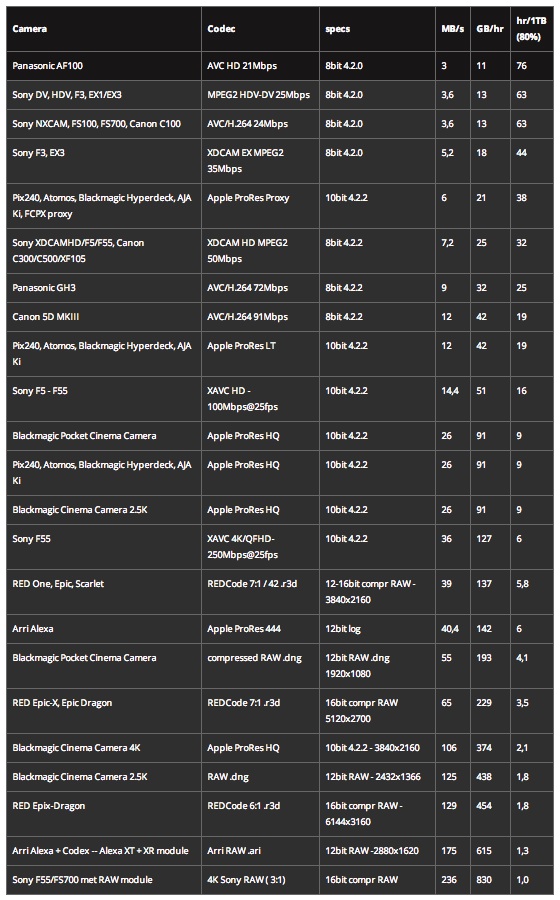How To Be A DIT – Part 11 – The Basics
https://www.youtube.com/watch?v=9WReg66tRiQ
This is the 11th instalment of How To Be A DIT, but really a lot of the knowledge and resources in these posts is also extremely valuable for editors, camera operators or the plain technologically curious. In this 11th instalment I’ve rounded up some great resources for understanding the basics of working proficiently with digital video files.
To check out all other posts tagged with DIT (45 posts), check out the DIT category on the right. Here too is a link to all the other parts of this series if you want to have a rummage in the past.
Part 1 | Part 2 | Part 3 | Part 4 | Part 5 | Part 6 | Part 7 | Part 8 | Part 9 | Part 10
What A DIT Does
If you’ve ever wondered what it actually is that a DIT does on set these interviews with professional Digital Image Technicians should give you a good feel for their day to day life.
In this extensive workflow breakdown, extreme sports photographer Lucas Gilman, shares some of his preferred workflow processes and equipment choices, most of which are good standard practices.
“Each member of the drive pair is then geographically separated at the end of every day. I’ll usually give one to my assistant. If we go to dinner, I get robbed, all my stuff’s gone, at least my assistant has the extra set. They’re basically never in the same place at the same time. Meanwhile, I also have the original master on the CF or SD cards as a third backup.”
In this short interview with AOTG.com DIT Duck Grossberg shares a few details of how he managed the on-set 3D workflow for Dawn of the Planet of the Apes.
Q: How did you determine your digital tools for your onset work?
A: I met with DP Michael Seresin to discuss the myriad issues associated with the complexity of a 3D film, such as shooting with the Arri Alexa M; using 3ality rigs; managing a ton of data, and the workflow needed for working with hundreds of thousands of native files. We both agreed on a straightforward approach to dealing with so much equipment and data.
My primary role was to do the live color grade on-set. I was also responsible for loading the cameras and doing a QC to ensure that all systems would work.
In this review of Scratch Play – the same tool Duck Grossberg is using on set, DIT Von Thomas shares his own on-set workflow as well as a few thoughts on that latest version of Scratch Play. Scratch Play is free to download here, or for $5 you can get it ad-free.
I find that the major part of my work is reviewing and applying a color-correction or LUT to the clips. That is the creative part, and the one I love the most. A program (Scratch Play) that will handle just about any file type I throw at it (yes, raw too), and play it back, plus throw a look on, or a pre-established LUT or CDL, is a tool I will use over and over.
Although not strictly about DIT work I thought this article on the secure encryption and security precautions required for the post-production work on Edward Snowdon documentary Citizen Four proved for a fascinating read.
After I came back from meeting Snowden in Hong Kong, I went back to Berlin and I just put my cell phone away. I figured it just wasn’t a good thing for me to have for a number of reasons. It’s a microphone and it’s also a tracking device and I just thought…I’m just not going to broadcast it. So I stopped using a cell phone while I was editing, but now I’m in here doing distribution and I need to talk to people so I’ve got a cell phone again.
DIT Essential Knowledge
In the is part of How To Be A DIT I’ve rounded up a whole host of resources on understanding the basics of working with digital video files; codecs, bit depth, resolution, colour depth, LUTS, compression etc.
I only had one article on frame rates to link to, so here it is.
Codecs
Michael Kammes has recently started a very useful web series called ‘5 Things‘ which covers a specific aspect of post production/technology in each episode. In this 15 minute video he works through the basics of codecs. For a more in-depth overview of what codecs are and which ones you should use in a given scenario check out this video from David Kong.
Click through on these images for some handy infographics on codecs. The second one from Double Precision is particularly useful!
Jason from Cinetic Studios has been experimenting with the new Cineform Codec, which was recently acquired by Go-Pro. In this post he considers several scenarios in which you might want to switch to Cineform over DNxHD or Pro Res. For more on the Cineform codec inside the Adobe Creative Cloud suite check out this post over on PVC.
In this 35 minute presentation Hugo Gaggioni, CTO of Sony Professional Solutions of America, talks through what exactly XAVC (4K H.264) is and the technical details there in.
Lastly Art Adams has some helpful guiding thoughts when choosing a codec. Well worth a read.
I can’t emphasise this enough–sometimes good enough really is good enough. If the producer wants to shoot a lesser codec for budgetary reasons, or to speed up post, you need to know when you can make their day by saying “No problem” vs. when that choice may destroy the project.
The (hopefully long dead) DVCProHD and XDCAM codecs are good examples of this. First, here’s the secret truth behind how every codec operates: EVERY CODEC THROWS INFORMATION AWAY AND HOPES YOU WON’T NOTICE. The engineers who design codecs spend a lot of time learning what the average human will and won’t notice and exploiting that knowledge.
Compression
In this 20 minute presentation from the Movie Machine Digital Cinema Festival, held here in London, Rick Young describes why we need both RAW and compressed images, and the impact that choice can have on your post workflow and budget.

In this super fast explanation of video compression you get a good overview of the essentials.
Bit Depth
If you prefer to read your way through an explanation of colour processing and bit-depth (and what the difference is with those 32-bit icons on some Premiere Pro effects) then this post from the Adobe blog, has got you covered.
Resolution (4K and Beyond)
Michael Kammes (this time with slightly different facial hair!) explains the vital information on 4K with regards to shooting, editing and delivering. Well worth 10 minutes of your time if you’re considering moving to a 4K workflow. In the video Michael talks about 4K viewing distances, this handy 4K calculator, does the math for you.
For more ‘4k Questions Answered’ check out this spill-over interview on working with 4K that was posted on PVC after a webinar with the team from Dawnrunner productions. PVC also have a free 4k workflow ebook that you can download from here, for a sign up.
What are the most common workflow pain points when selecting to work in 4K or 4K RAW?
Dawnrunner Team: There are some different things to think about when shooting 4K. Many people working with HD footage are used to working in a online-edit environment (editing with the camera original files directly). While this is possible today with fast computers, we have started making the first step of our post process a one-light color correction since the footage is raw. From there we can edit the graded footage in 4K or even create proxies for our editors. Finalizing, doing VFX, and delivering are pretty much the same, but we’ve found that it’s these first steps that have changed a lot in our workflow and may be something that you need to get used to. We had to relearn how to estimate our post production schedule to accomodate these changes so that we could accurately communicate a time scale to our clients.
Ben Dair (via Redsharknews) has a great, and exceptionally detailed, infographic on 4K/Ultra HD, which you can download directly here.
DIT Tools
Basically Live Play 3 from Light Iron Digital is fairly freaking phenomenal. I just wish I had a use for it, but I’m not doing that kind of on-set work. Watch this demo to find out just what’s so awesome about it. For more from Michael check out How To Be A DIT – Part 10.
Recently Red Giant, the makers of the more fully featured media management app Bulletproof ($199), has released a new app, Offload ($49), which simply tackles the straight forward function of copying your camera’s media, much like Shotput Pro ($99). Which at $49, it is half the price of. Pro Lost has a good post on it here.
Personally I use Shotput Pro, but you could also check out Al3xa Data Manager or the slightly more exotic Velarium. Seemingly Pomfort’s Silverstack is the ”most professional” software to use, being the most expensive at $390 per year. (They also make Cliphouse). But really any of these tools will get the job done. It would be interesting to see some speed comparison tests though if anyone finds any?!
Also some of these tools do a lot more than simply just copy the cards, such as basic editorial, LUT application, dailies creation and more, so the comparison is a little off.

To see just what Silverstack can do, have a read of this detailed review from professional DIT ‘Dork In a Tent’, who was part of the beta testing program and has some salient points to make on the new features and updates in version 4. Here is the explanation for the reduction in offload times in the image above when using different checksum verifications.
Here’s a test with the same card using XXHash, MD5, File size verification, and Cascading Copy with XXHash (more on this later) in that order. Seems like XXHash is slightly faster with version 4 but still, over time it would be a good benefit to have IMO.
Also the Pomfort blog has a short post on sending metadata to FCPX from Silverstack which might come in handy if that’s what you’re doing.












